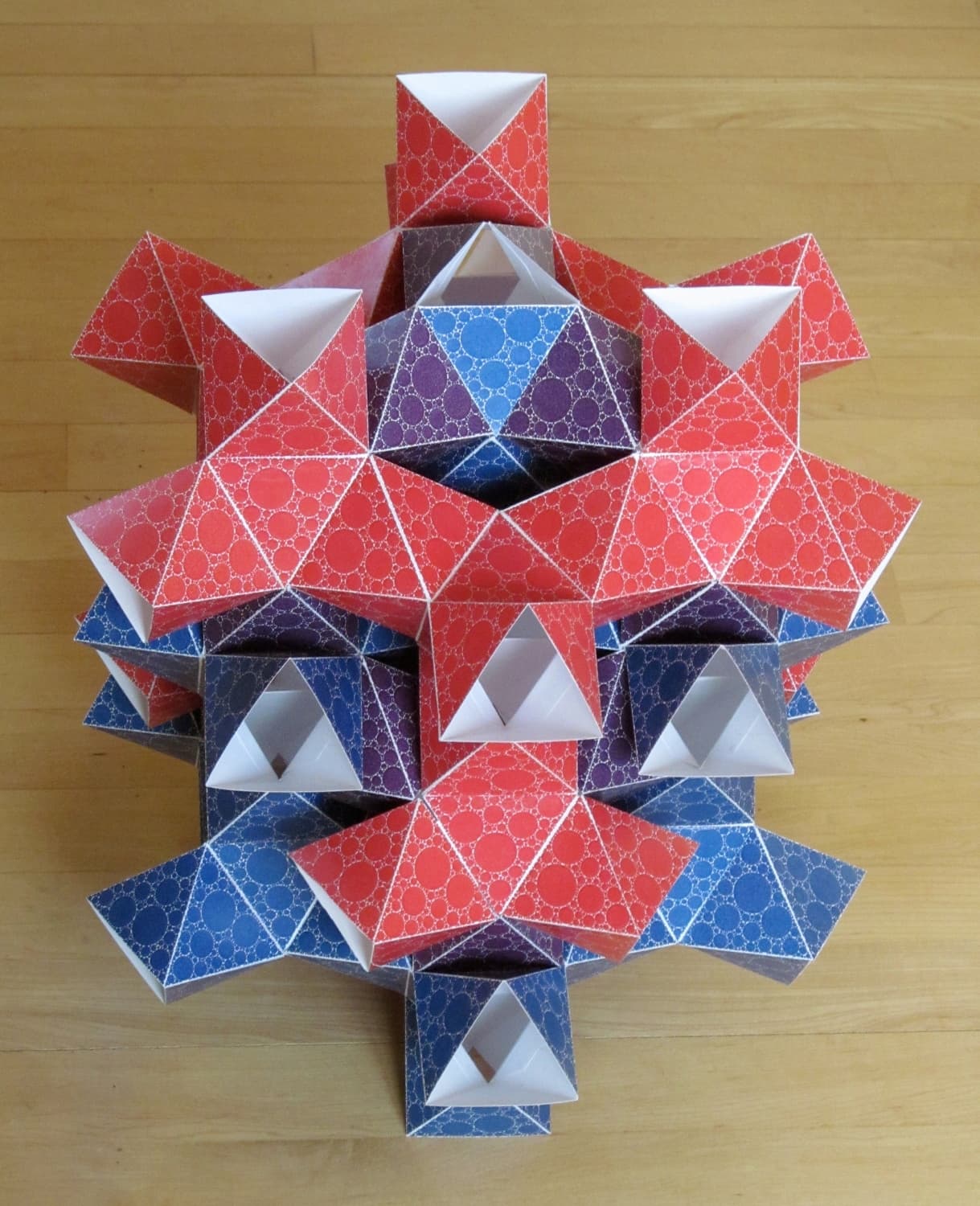2016 Joint Mathematics Meetings
Doug Dunham
Artists
Doug Dunham
Professor Emeritus of Computer Science
Dept. of Computer Science, University of Minnesota Duluth
Duluth, Minnesota, USA
Statement
The goal of my art is to create aesthetically pleasing repeating hyperbolic patterns. One way to do this is to place patterns on (connected) triply periodic polyhedra in Euclidean 3-space. These polyhedra are considered to be hyperbolic since the sum of the angles around each vertex is greater than 360 degrees. The first polyhedron below is decorated with a fractal circle pattern. The second and third polyhedra are decorated with motifs inspired by M.C. Escher. There is a two-step connection between these latter two polyhedra and hyperbolic plane patterns: (1) they approximate triply periodic minimal surfaces, and (2) those surfaces have the hyperbolic plane as their universal covering surface.
Artworks

A Fractal Circle Pattern on the {3,12} Polyhedron
50 x 30 x 30 cm
Printed Cardboard
2015